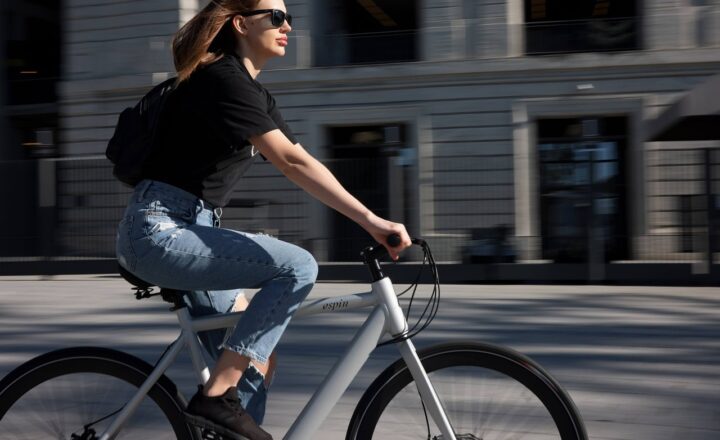The Rise of Electric Scooters: Are They Transforming Urban Transport?
November 15, 2024

In recent years, electric scooters have become a hallmark of urban transport transformations, making their way into bustling city streets around the globe. With their rapid adoption, these two-wheeled vehicles promise an eco-friendly alternative to cars, helping to alleviate traffic congestion and reduce carbon emissions. In this article, we’ll delve into the rise of electric scooters, exploring their impact on urban transport, the benefits they offer, the challenges they face, and the future they may hold in the realm of mobility.
1. The Explosive Growth of Electric Scooters
Electric scooters saw a meteoric rise in popularity, with estimates suggesting that over 1.5 million scooters were available for hire across the world in 2020 alone. Major cities like San Francisco, Paris, and Berlin have embraced e-scooters amid a growing desire for sustainable transport solutions. The convenience offered by smartphone-app integrations allows users to easily locate and rent scooters, making them an attractive option for short trips.
The proliferation of electric scooters can be attributed to several key factors:
- Convenience: Scooters are easy to use. Riders can quickly zip from one destination to another while dodging traffic jams, saving time and hassle. The ability to drop off scooters almost anywhere also increases their ease of use over traditional rental methods.
- Eco-friendliness: As the world becomes more conscious of climate change, many commuters are seeking greener alternatives. Electric scooters produce no tailpipe emissions and consume significantly less energy compared to cars, making them a sustainable choice.
- Affordability: With lower operating costs compared to cars and public transport, scooters provide a cost-effective solution for many users, especially for short distances.
As cities strive to manage urban mobility, electric scooters have emerged as the answer to many dilemmas faced by urban planners.
2. Benefits of Electric Scooters
E-scooters provide numerous advantages that collectively transform the way urban users approach their commutes:
- Reduced Traffic Congestion: As more people choose scooters over cars for short trips, cities observe reduced vehicle density, leading to less traffic gridlock and smoother commutes for all transportation modes.
- Lower Carbon Emissions: Transitioning from gasoline-powered vehicles to electric scooters diminishes overall carbon emissions, playing a part in reducing urban air pollution.
- Health Benefits: Riding scooters promotes physical activity, promotes a more active urban lifestyle, and encourages less sedentary routines compared to driving.
Moreover, with less cars on the road, air quality improves, benefitting overall public health. - Flexibility and Ease of Use: E-scooter sharing programs have made these vehicles accessible anytime and anywhere, allowing for a seamless experience that becomes a viable option for last-mile trips.
These benefits not only contribute to individual users but also to the public in terms of improved environmental conditions and reduced congestion.
3. Challenges Facing Electric Scooters
While the benefits are compelling, the rise of electric scooters does not come without hurdles:
- Safety Concerns: As cities grapple with integrating scooters into existing transit systems, safety remains a significant concern. Riders often navigate traffic without adequate infrastructure, leading to accidents and injuries. Additional measures such as designated e-scooter lanes could help mitigate these risks.
- Regulatory Issues: Governments are still developing regulations surrounding the use of scooters. The lack of common standards across cities can lead to confusion regarding parking, speed limits, and user age requirements. Striking a balance between innovation and regulation is crucial for the safety and reliability of e-scooters.
- Operational Costs: E-scooter companies face challenges regarding maintenance, charging, and rebalancing scooters. As usage continues to rise, operational methods must adapt to sustain service quality while managing costs effectively.
- Public Perception: Scooters can be perceived as clutter, especially when improperly parked. Promoting responsible riding and parking etiquette is vital for maintaining local support and acceptance of e-scooter programs.
These challenges underscore the importance of collaborative efforts between e-scooter companies, city planners, and regulatory bodies to develop comprehensive solutions.
4. The Future of Electric Scooters in Urban Transport
Looking ahead, the future of electric scooters appears bright, provided certain advancements and integrations are made:
- Improved Infrastructure: Cities must invest in dedicated scooter lanes and safe parking spaces to enhance user safety and reliability. Integrating e-scooters into existing public transport systems will give users more options for commuting while reducing car dependency.
- Technological Advancements: As technology continues to evolve, e-scooters may incorporate improved safety features like automatic braking systems, GPS tracking, and anti-theft mechanisms, increasing user confidence and reducing accidents.
- Collaboration with Local Governments: Scooter companies can work collaboratively with municipalities to create shared goals for sustainable urban mobility. This cooperation can lead to tailored solutions that not only accommodate e-scooters but also the entire transport ecosystem.
We may even see opportunities for public-private partnerships in service delivery and operational maintenance, making e-scooter systems more integrated and effective. - Expanded Communities of Use: As awareness grows, so might regulations shift in favor of promoting shared mobility services. Initiatives to expand scooter availability in suburban areas or underserved neighborhoods can improve accessibility to essential services and contribute positively to community mobility.
The trajectory for electric scooters indeed signifies a transformative shift in the way we commute, as cities and users strive for more eco-friendly solutions.
5. Conclusion: A New Era in Urban Mobility
The rise of electric scooters is a testament to the pressing need for innovative transport solutions within urban environments. As congestion worsens and the urgency to combat climate change rises, e-scooters present an alternative that aligns with sustainability goals. While they offer countless benefits, navigating the accompanying challenges will require collaboration, investment in infrastructure, and community acceptance.
Are electric scooters truly transforming urban transport? The resounding answer is—yes! As they become more integrated into the urban transport fabric, they are positioned to redefine our approach to commuting, promoting greener, healthier, and more efficient pathways for cities around the world. The future is electric, and it rolls on two wheels.








